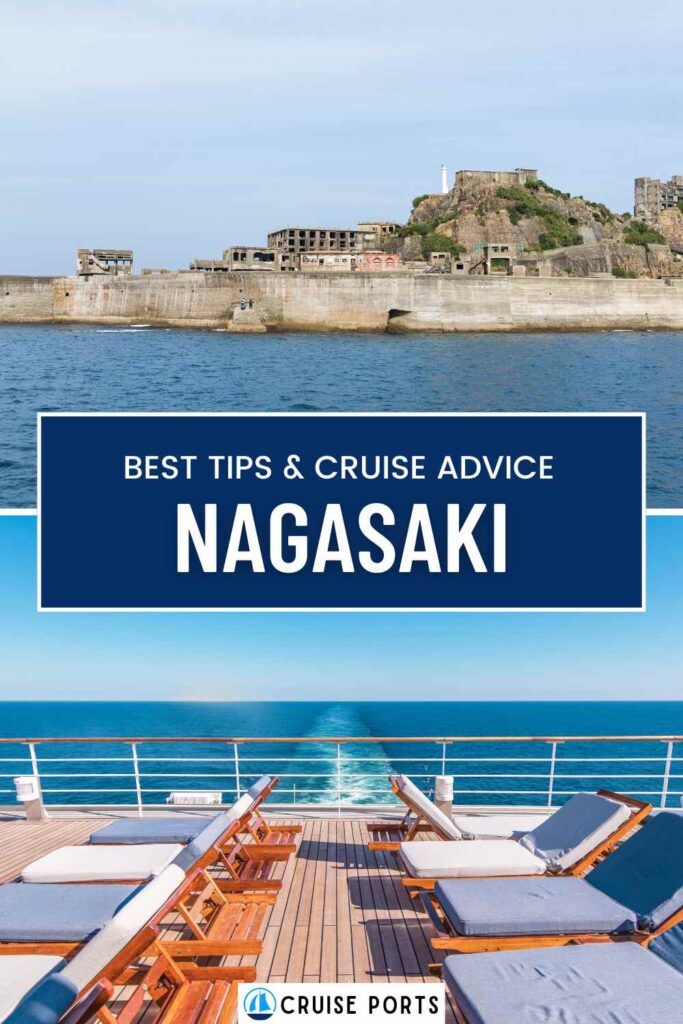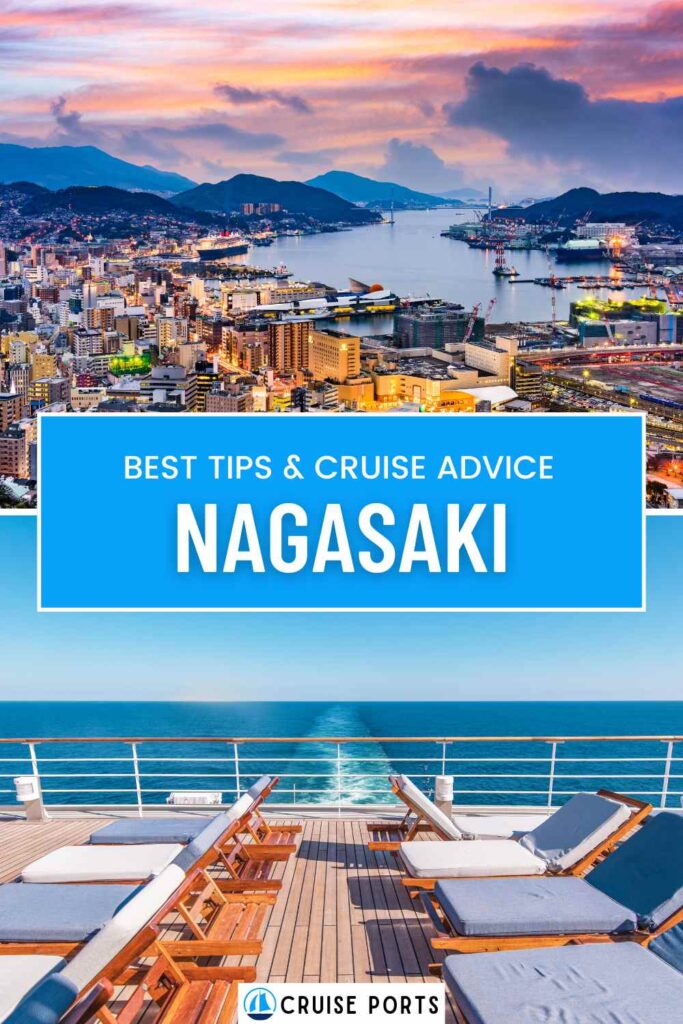Nagasaki Cruise Port is your gateway to one of Japan’s most culturally rich and historically significant destinations.
From breathtaking landmarks to mouthwatering culinary delights, this port city offers a captivating mix of old and new.
Whether you’re stopping by for a day or exploring for longer, Nagasaki Cruise Port will leave you enchanted.
What Makes Nagasaki Cruise Port Unique
Nagasaki Cruise Port stands out as a vibrant blend of Japanese heritage, international influences, and a deep historical narrative shaped by centuries of trade, cultural exchange, and resilience.
Its stunning waterfront location, coupled with centuries-old structures, offers a distinctive glimpse into how Nagasaki flourished as one of Japan’s earliest gateways to the West.
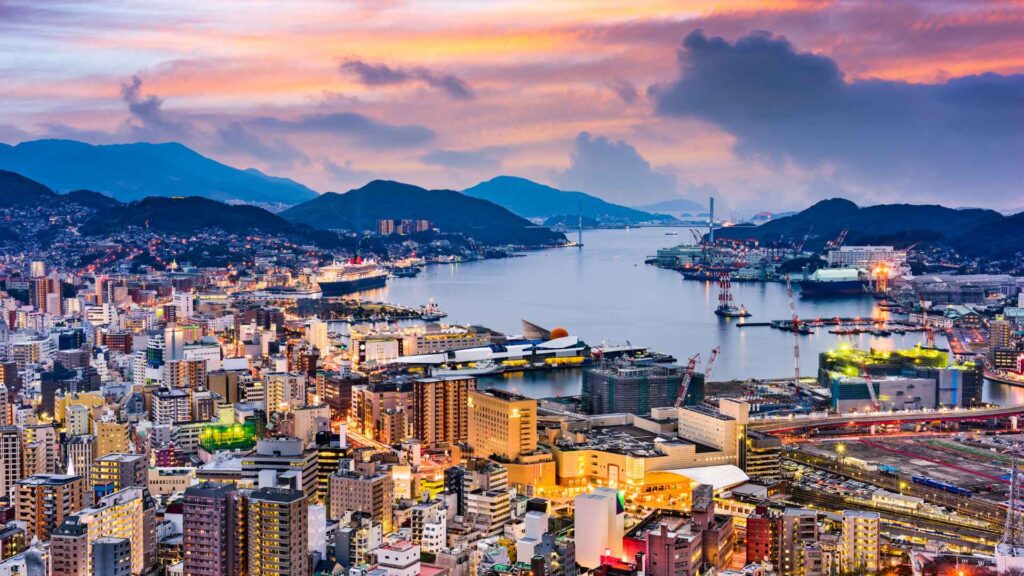
Historical Significance
- Foreign Trade Legacy: Nagasaki was one of the few ports open to foreign powers during Japan’s centuries of isolation, leading to a unique cultural fusion.
- Religious Heritage: European missionaries brought Christianity, leaving behind a remarkable architectural footprint that includes churches, monuments, and serene memorial sites.
- Resilience and Renewal: Nagasaki endured a devastating moment in history, but the city has transformed itself into a symbol of peace and forward-thinking spirit.
Distinct Cultural Fusion
- Food Influences: Portuguese, Dutch, and Chinese traders all contributed to Nagasaki’s local dishes, resulting in a diverse culinary scene.
- Art and Architecture: You’ll notice Western-style buildings alongside traditional Japanese temples, giving the port and its surroundings a cosmopolitan flair.
- Celebrations: Seasonal festivals often showcase a mixture of Japanese and Western traditions, making for colorful, vibrant experiences you won’t find elsewhere in Japan.
Why the Port Shines Today
- Waterfront Views: The cruise port rests in a picturesque harbor framed by green hills and a bustling city skyline.
- Efficient Facilities: Modern passenger terminals and amenities ensure a comfortable experience from the moment you disembark.
- Gateway to Kyushu: A stop at Nagasaki Cruise Port provides direct access to the island of Kyushu’s many attractions, from hot springs to volcanoes.
This blend of historic resilience, cultural harmony, and natural beauty makes Nagasaki Cruise Port a standout destination.
Visitors will discover a city that honors its past while enthusiastically embracing modern influences.
Whether you’re a history buff, a foodie, or simply an intrepid traveler looking to witness something different, Nagasaki promises an exciting and enlightening journey.
Navigating the Port: Arrival and Departure
When your cruise ship docks at Nagasaki Cruise Port, you’ll disembark at a modern terminal designed to welcome international travelers.
The terminal is well-equipped with comfortable lounges, currency exchange booths, and knowledgeable staff ready to assist with last-minute needs. From the moment you step off the ship, Nagasaki’s seamless blend of tradition and innovation is evident.
What to Expect Upon Arrival
- Efficient Disembarkation: Cruise lines typically organize smaller groups to expedite customs and immigration procedures.
- Clear Signage: Signs in Japanese, English, and often Chinese guide you to baggage claim areas, tourist information centers, and local transportation.
- Immediate Access to Taxis: Taxis are available directly outside the terminal, making it easy to reach central Nagasaki or nearby attractions.
Departure Essentials
- Check Your Schedule: Confirm your ship’s departure time, factoring in any potential local traffic or event-related delays.
- Revisit the Terminal: The terminal provides duty-free shopping, souvenir stores, and comfortable waiting areas for passengers who arrive back early.
- Border Formalities: Customs and immigration officials work swiftly, but it’s wise to keep passports, visas, and health documents handy for quick processing.
Tips for Smooth Arrival and Departure
- Arrive Early: If you plan to explore independently before re-boarding, arriving at the terminal an hour before departure ensures a stress-free experience.
- Download Offline Maps: Wi-Fi is available at the terminal, but having offline navigation can be helpful when moving around the city.
- Keep Local Currency: While many places accept credit cards, carrying some Japanese yen can make smaller transactions more convenient.
Once you’ve navigated the port’s state-of-the-art facilities, you’ll be perfectly positioned to explore all that Nagasaki has to offer.
Whether you’re staying for a day excursion or venturing out overnight, the port area sets you up for a comfortable, hassle-free adventure in one of Japan’s most beautiful coastal cities.
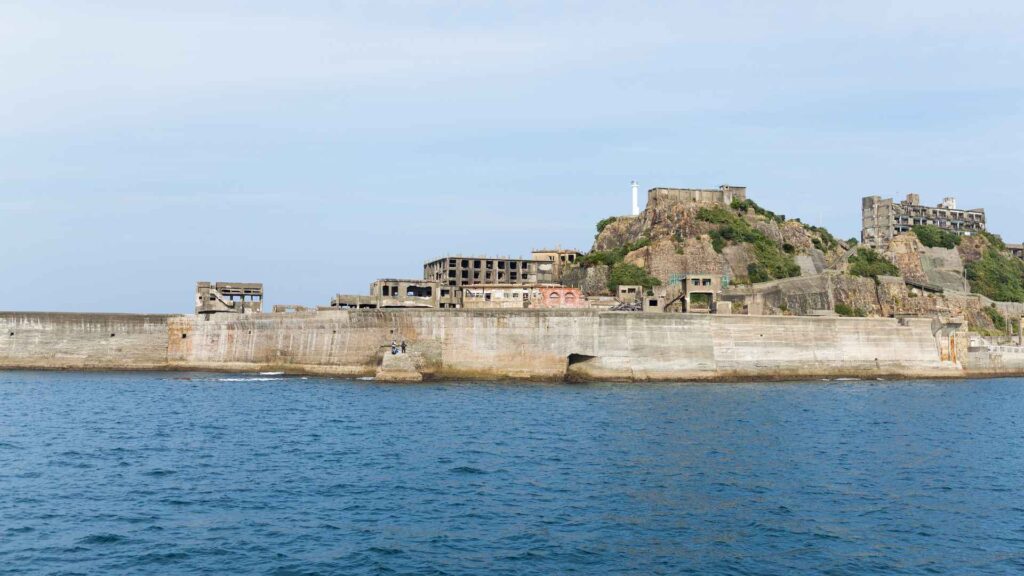
Must-See Attractions Near Nagasaki Cruise Port
Nagasaki’s compelling blend of history and modern charm shines through its many nearby attractions.
Once you exit the cruise terminal, you’ll find major historical sites, cultural landmarks, and scenic viewpoints within easy reach. These destinations showcase the very best of Nagasaki, immersing you in the city’s distinctive story.
Glover Garden
- Western-Style Architecture: Built on a hillside, Glover Garden features Western residences once owned by foreign merchants. The area offers panoramic views of the harbor and city.
- Open-Air Museum: Explore meticulously preserved homes, lovely gardens, and hidden pathways that highlight Nagasaki’s past as a gateway to international trade.
- Cafés and Souvenirs: Enjoy a quiet moment at a traditional café or pick up local crafts from the gift shops.
Oura Church
- Historic Site: Known as Japan’s oldest standing Christian church, it’s a peaceful tribute to Nagasaki’s early Catholic community.
- Architectural Beauty: Admire the Gothic-inspired design infused with Japanese craftsmanship.
- Nearby Museums: Located near Christian museums that shed light on Nagasaki’s history of hidden Christianity.
Nagasaki Peace Park
- Monument to Peace: A reflective location dedicated to those affected by the atomic bombing. A giant statue represents the city’s commitment to global harmony.
- Fountains and Gardens: Surrounding greenery and water features provide a solemn yet serene environment.
- Peace Symbols: Stone plaques and statues donated by other nations reinforce the park’s universal message of hope.
Dejima Island
- Former Dutch Trading Post: Once an artificial island for Dutch traders, it now offers a reconstructed look into Japan’s age of limited foreign contact.
- Historic Architecture: Walk among traditional warehouses, homes, and offices that detail life during isolation.
- Interactive Exhibits: Enjoy hands-on displays, period costumes, and informational panels that bring history to life.
Insta-Worthy Views
- Mount Inasa: A short ride away, this mountain boasts one of the most spectacular night views in Japan.
- Huis Ten Bosch: Though slightly further out, this Dutch-themed park is famous for its windmills, floral displays, and European architecture—creating picture-perfect moments.
These attractions around Nagasaki Cruise Port provide a window into a city shaped by resilience, faith, and multicultural influences.
Whether you prefer soaking in the waterfront sights, exploring hidden historical corners, or capturing striking views from a mountaintop, Nagasaki offers something special to each and every traveler.
Where to Eat and Drink
One of the standout pleasures of visiting Nagasaki Cruise Port is the opportunity to experience its diverse culinary scene.
With influences spanning from Portuguese traders to Chinese immigrants, Nagasaki boasts signature dishes and fusion cuisines that set it apart from other Japanese cities.
Whether you’re craving a local street snack or an upscale dining experience, you’ll find flavorful options everywhere.
Local Dishes to Try
- Champon: A hearty noodle soup loaded with seafood, pork, and colorful vegetables. It originated from Chinese students seeking an affordable yet nutritious meal.
- Sara Udon: Similar to champon, but served on crispy noodles, giving it an addictive texture.
- Castella Cake: A delicate sponge cake introduced by Portuguese merchants. Look for variations like matcha or honey flavors in local bakeries.
- Nagasaki Kakuni Manju: Braised pork belly sandwiched between fluffy white buns. The sweet and savory balance is unforgettable.
Best Dining Spots
- Shianbashi District: Renowned for cozy izakayas and late-night eateries. Here, you can taste everything from fresh sushi to Nagasaki’s famed fried delicacies.
- Chinatown (Shinchi): Japan’s oldest Chinatown houses many restaurants specializing in champon and other Chinese-influenced dishes.
- Harborfront Cafés: If you want to dine with a view, the harbor area features modern bistros and scenic terraces.
Drinks and Nightlife
- Sake Sampling: Local breweries offer premium Japanese rice wine in a variety of flavor profiles.
- Cocktail Bars: Trendy bars near the waterfront put unique spins on classic cocktails.
- Craft Beer: Microbreweries in Nagasaki produce artisanal beers that pair well with local cuisine, making for a refreshing end to your evening.
Dining Etiquette
- Cash vs. Cards: Some smaller restaurants may only accept cash, so keep yen on hand.
- Respectful Slurping: In Japan, slurping your noodles is seen as a compliment to the chef.
- Sharing is Common: Many eateries serve dishes in shareable portions, reflecting a communal dining culture.
Wherever you venture in Nagasaki’s food scene, you’ll discover a shared reverence for fresh ingredients and time-honored techniques.
From fusion dishes inherited from centuries of overseas influence to classic Japanese comfort foods, the city promises something for every palate. Explore confidently, and you’ll find each plate tells a unique story of Nagasaki’s culinary evolution.
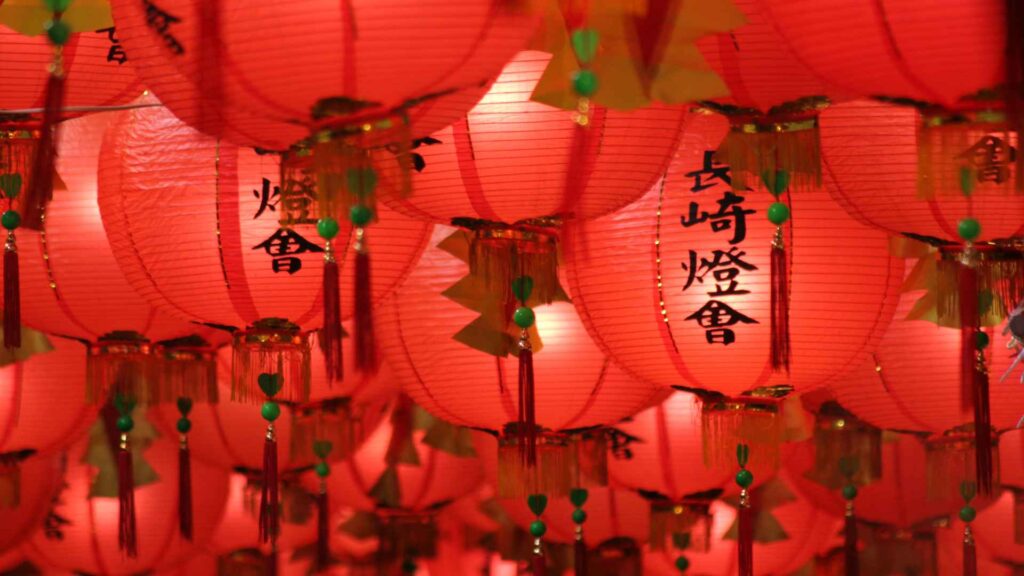
Cultural Tips for Exploring Nagasaki
Navigating Nagasaki is more than just visiting landmarks; it’s about embracing the local culture that makes this port city extraordinary.
Understanding a few customs and social norms will enrich your experience and open doors to genuine connections with residents. From everyday etiquette to festival traditions, Nagasaki’s culture is as warm as it is multifaceted.
Everyday Etiquette
- Greetings: Bowing is a sign of respect, although a friendly nod or small bow is acceptable for foreigners.
- Punctuality: Being on time is highly valued. If you have a reservation or plan, arrive promptly.
- Polite Phrases: Learn basic Japanese words like arigato (thank you) and sumimasen (excuse me), which go a long way in showing respect.
Local Customs
- Footwear Rules: In traditional homes, temples, or certain restaurants, you’ll be asked to remove your shoes. Look for provided slippers or designate socks if needed.
- Gift-Giving Culture: Small tokens of appreciation are common, but not mandatory, especially if you make new friends or attend local gatherings.
- Worship Etiquette: When entering shrines or temples, follow the local practice of washing hands and mouth at the purification fountain before approaching the altar.
Festivals and Events
- Nagasaki Lantern Festival: Celebrated during Lunar New Year, the city glows with thousands of lanterns, parades, and traditional Chinese performances.
- Kunchi Festival: One of Japan’s most vibrant autumn celebrations, featuring energetic dances, ornate floats, and cultural performances unique to Nagasaki.
- Peace Memorial Ceremonies: Held annually on August 9th to commemorate the city’s atomic bombing, focusing on reflection and international peace.
Interacting with Locals
- Patience with Language: Not everyone speaks English fluently, but most people are friendly and willing to help.
- Respectful Photography: Ask for permission if you plan to take photos of people, especially in places of worship or private establishments.
- Open Curiosity: Show genuine interest in local traditions, cuisine, and storytelling. This humility often leads to wonderful cultural exchanges.
Immersing yourself in Nagasaki’s cultural tapestry allows you to gain a deeper appreciation for the city’s resilience and uniqueness.
By showing respect to local traditions, engaging in common courtesies, and savoring the festive spirit, you’ll form memories far more vivid than any postcard could capture.
Transportation Options and Practical Tips
Getting around Nagasaki from the cruise port is straightforward, thanks to an array of user-friendly transportation options.
Whether you’re looking to travel by streetcar, taxi, or on foot, the city is designed to make your visit enjoyable and accessible. Equipped with the right practical tips, you can easily plan day trips or short excursions that fit your timeline.
Streetcars and Buses
- Convenient Streetcar System: Nagasaki’s streetcars run frequently and serve key tourist areas, making it an affordable, scenic way to explore.
- One-Day Pass: A daily unlimited ride pass can save you money if you plan to hop on and off multiple times.
- City Buses: If you’re heading to areas not covered by streetcars, local buses extend your reach.
Taxis
- Readily Available: Taxis can be found near the cruise terminal and popular sites.
- Fares: Meters start at a base rate, with additional charges per kilometer or minute.
- Card Payment: Most taxis now accept credit cards, but always confirm before starting your ride.
Walking and Biking
- Walkable City Center: Many attractions are clustered around the harbor and central districts, making it easy to explore on foot.
- Bike Rentals: If you prefer a quicker option than walking, look for bike-sharing services or local rental shops.
Traveling Beyond Nagasaki
- JR Trains: Nagasaki Station provides easy access to neighboring cities like Fukuoka, Sasebo, and Kumamoto.
- Ferries: For a scenic route, ferries connect to nearby islands or offer leisurely tours of Nagasaki’s coastline.
- Day Trips: Consider venturing to Unzen Onsen for hot springs or Shimabara to see a well-preserved castle town, both within a couple of hours’ reach.
Practical Tips
- SIM Cards and Wi-Fi: Short-term SIM cards and pocket Wi-Fi devices are available at major transportation hubs, ensuring you stay connected.
- Weather Preparations: Nagasaki’s weather can vary from humid summers to mild winters. Pack accordingly and carry an umbrella if you visit during rainy seasons.
- Cash vs. Cards: Public transportation often takes prepaid travel cards like Suica or Icoca, but some smaller vendors might prefer cash.
By choosing the transportation method that best suits your interests, you’ll be free to explore Nagasaki’s highlights at your own pace. A little planning goes a long way in ensuring your time off the cruise is spent creating unforgettable memories rather than getting lost in transit.
Safety and Security at Nagasaki Cruise Port
Nagasaki has a reputation for being one of Japan’s safer cities, and Nagasaki Cruise Port upholds that standard with efficient port management and clear security protocols.
Travelers can explore with peace of mind, knowing that both the port area and the city at large prioritize visitor welfare. However, staying informed and following a few safety guidelines always helps ensure a relaxing journey.
Port Security Measures
- Surveillance Systems: Video cameras monitor key port zones, supplemented by on-site security personnel.
- ID Checks: Passports or official cruise ID cards are checked at entry and exit points to maintain controlled access.
- Safe Baggage Handling: Your cruise line and port authorities coordinate secure baggage checks to prevent any mishaps.
City Safety
- Low Crime Rates: Nagasaki maintains a low crime rate, making it a comfortable place for solo or group travelers.
- Well-Lit Streets: Downtown and tourist-friendly neighborhoods are brightly lit, ensuring safer nighttime explorations.
- Emergency Services: Police stations, hospitals, and clinics are well-marked, with emergency numbers readily available.
Health and Wellness
- Clean Water: Tap water is generally safe to drink in Japan, but if you’re uncertain, bottled water is widely available.
- Hygiene Standards: Restaurants and hotels follow strict hygiene protocols, giving you peace of mind when dining out.
- Travel Insurance: Even in a safe city, having comprehensive travel insurance for medical emergencies can offer extra security.
Staying Alert
- Personal Belongings: While crime is low, it’s still wise to keep an eye on valuables and use hotel safes for passports or extra cash.
- Public Wi-Fi: Use reputable networks, and avoid sharing sensitive data on open connections.
- Follow Local Guidelines: Respect any safety updates or alerts, especially regarding weather. Typhoon season can occasionally disrupt travel plans, so staying informed is essential.
With its efficient security infrastructure and welcoming atmosphere, Nagasaki ensures that a trip to the cruise port is as safe as it is enriching.
Travelers who follow basic precautions and remain aware of their surroundings can focus fully on absorbing the city’s many cultural, historical, and natural wonders.
